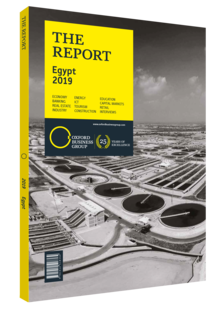Egyptian capital markets bullish despite recent setbacks
The Egyptian Exchange (EGX) is one of the oldest stock markets in the Middle East and dates back to 1883. It includes the main market, an over-the-counter market, and the Nile Stock Exchange (Nilex) for small and medium-sized enterprises.
As of November 2018 there were 220 companies listed on the main market with a total market capitalisation of LE751bn ($42.2bn) and 32 listed on the Nilex with a total market cap of LE1.2bn ($67.4m). The two most widely followed market indices are the EGX30, a free-float market capitalisation-weighted index of the 30 most actively traded companies, and the EGX70, a price index that tracks the performance of the next 70 most active stocks on the main market. Egypt is also part of the MSCI Emerging Markets Index.
Recent Trends
Since the Egyptian pound was floated in November 2016, the EGX30 has gained 42% in local currency terms. This came on the back of renewed optimism and regained investor confidence following the signing of a $12bn extended fund facility with the IMF, and the implementation of a number of structural reforms under the country’s three-year programme.
Total market transactions for the first 11 months of 2018 stood at LE312bn ($17.5bn), implying an average daily turnover of LE1.4bn ($78.7m). Institutional investors accounted for around 44% of total turnover, while retail investors accounted for the rest. In geographic terms, foreign investors accounted for 23%, Arab investors for 11% and Egyptian investors for 66%.
The emerging market sell-off in 2018 took a toll on market performance, leading to only four initial public offerings (IPO) – eight were initially announced at the beginning of the year. It has also delayed the government’s partial asset sale programme, the first phase of which was valued at LE80bn ($4.5bn), had a timeframe of 24-30 months and involved a total of 23 state-owned companies. Its 14 planned IPOs included Banque du Caire and Enppi, as well as nine secondary offerings. The main market ended November 2018 trading at an average price-to-earnings multiple of 11.5x, offering an average dividend yield of 2.42%.
Looking Ahead
Although the Central Bank of Egypt has delayed the easing cycle due to the global environment of high interest rates and local inflation, market performance will likely be bullish over the coming 12 months backed by improving economic conditions, the government’s commitment to its reform programme and an ambitious partial asset sale strategy. The country has also seen credit ratings upgrades, with Standard & Poor’s revising its outlook from stable to positive in late 2017. This has further improved investment appetite, attracting more inflows from foreign investors. As for company earnings, a pick-up in private consumption growth will most likely positively impact corporate earnings, especially within the consumer sector. According to consensus forecasts, earnings of EGX30 companies are expected to grow 22% in 2019.
Regulatory efforts are also set to play a role in sector development, with the Parliament approving amendments to the Capital Markets Law, including establishing a framework for companies and the government to issue sukuk (Islamic bonds), allowing for the opening of a futures exchange and the trading of derivatives, reducing listing fees and setting up a federation for non-banking financial companies similar to the Federation of Egyptian Banks. The EGX is also planning to complete the necessary procedures to initiate short selling, derivatives trading and market-maker activities during 2019. These are part of the Egyptian Financial Regulatory Authority (FRA) four-year strategy to develop the non-banking financial sector by 2022, targeting the increase of stock market capitalisation to GDP to 50%, increasing total market cap to LE3trn ($168.6bn), and raising the number of listed companies to 400. In addition, the FRA has approved new regulations allowing insurance companies to invest up to 40% of their available reserves in listed or non-listed securities, which is an increase from the previous 30%.
You have reached the limit of premium articles you can view for free.
Choose from the options below to purchase print or digital editions of our Reports. You can also purchase a website subscription giving you unlimited access to all of our Reports online for 12 months.
If you have already purchased this Report or have a website subscription, please login to continue.

